Introduction to Hair Transplant
A hair transplant isn’t just about regaining lost hair or altering appearances. It’s about reclaiming your confidence and the image you present to the world. This surgical procedure is a long-term solution that transplants hair from your denser areas to those with thinning or no hair. The results are natural-looking and, more importantly, sustainable over time.
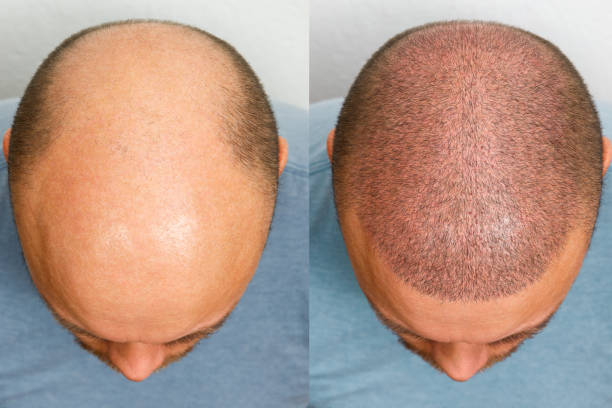
Understanding Hair Loss
Genetics:The most common cause of hair loss is a hereditary condition that happens with aging. This condition is known as androgenic alopecia, male-pattern baldness, and female-pattern baldness. It typically occurs gradually and in predictable patterns — a receding hairline and bald spots in men and thinning hair along the crown of the scalp in women.
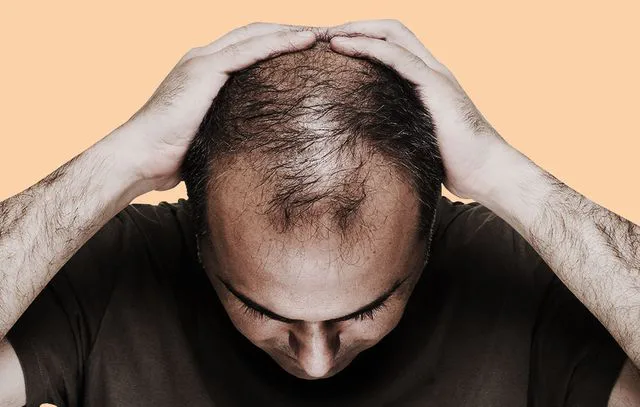
Dietary Factors: A diet lacking in protein, iron, and other nutrients can also lead to thinning hair.
Stress: Many people experience a general thinning of hair several months after a physical or emotional shock. This type of hair loss is temporary.
Understanding the underlying causes of your hair loss can help our specialists tailor the most effective treatment plan for you. Our approach is not just about treating hair loss but also understanding and addressing the root cause, ensuring you not only look better but also feel better overall.
What is Hair Transplant?
Types of Hair Transplant Procedures
Hair transplantation has evolved significantly over the years, offering various procedures tailored to the individual needs and conditions of patients. The following are the most common types of hair transplant procedures available.
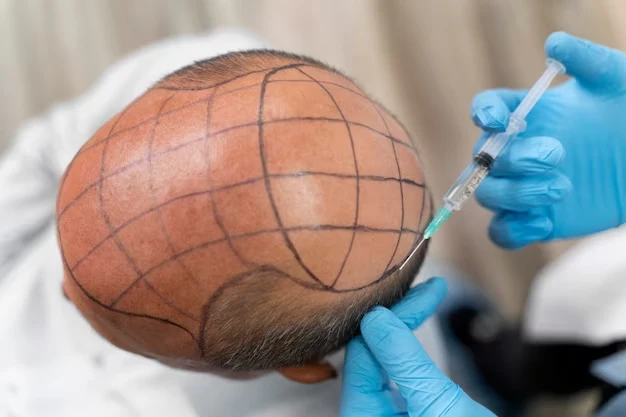
Follicular Unit Transplantation (FUT)
Follicular Unit Extraction (FUE)
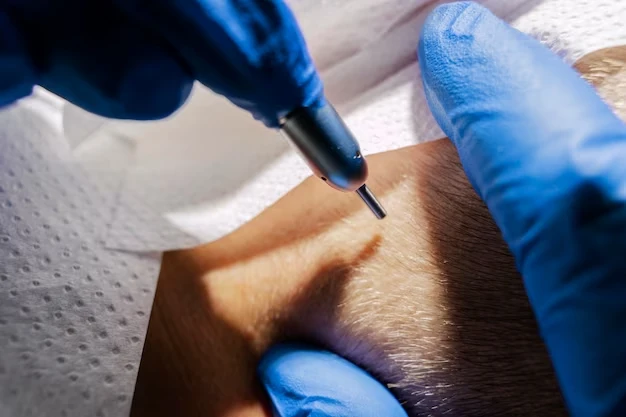
Direct Hair Implantation (DHI)
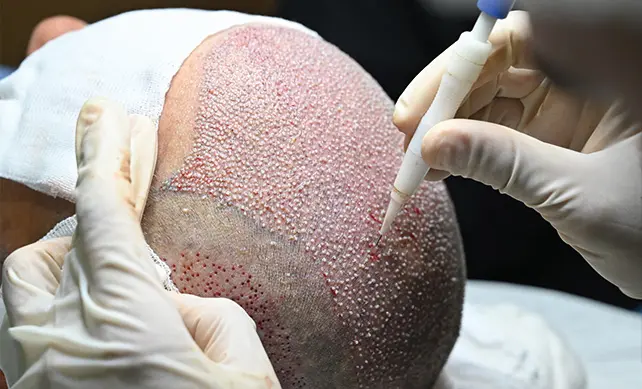
Robotic Hair Transplantation
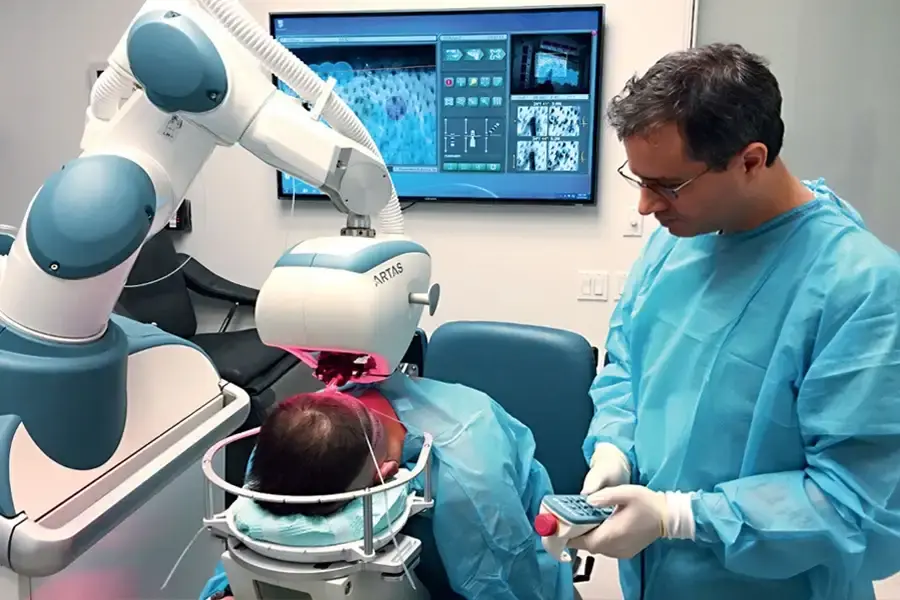
Scalp Reduction Surgery
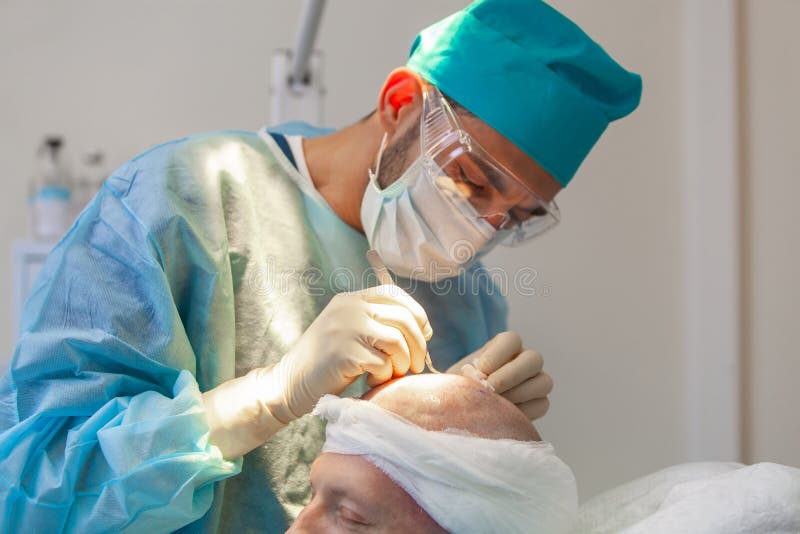
Body Hair Transplant (BHT)
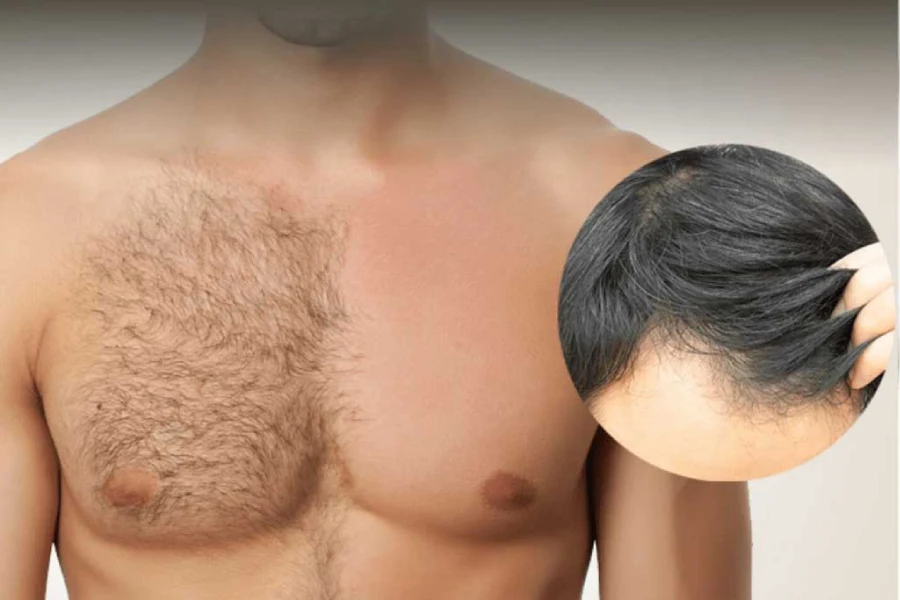
Ideal Candidates for Hair Transplant
Hair transplant surgery can be a life-changing procedure for those who are self-conscious about hair loss. However, it’s not suitable for everyone. The characteristics of ideal candidates for hair transplant are,
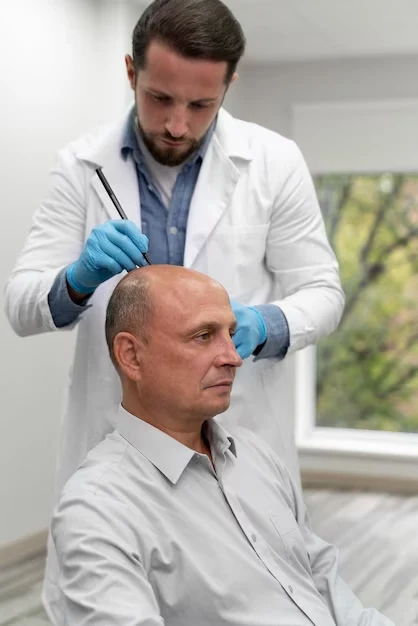
-
Adequate Hair Density at Donor Site
An ideal candidate should have good hair density at the back and sides of the scalp, which serve as the donor areas. This ensures there are enough hair follicles available for transplantation to the balding areas.
-
Hair Texture
Individuals with thick and curly hair often achieve better coverage than those with fine hair because thick and curly strands occupy more scalp area, creating a fuller look.
-
Hair Color
Candidates whose hair color closely matches their scalp color may see better results because the contrast is less noticeable. However, this is not a strict criterion.
-
Age Considerations
While there's no specific age limit for a hair transplant, it's typically recommended for individuals over 25. This is because hair loss patterns can be unpredictable in younger people.
-
Hair Loss Type and Pattern
Ideal candidates often have male or female pattern baldness. Hair transplants are less effective for those with diffuse hair loss, alopecia areata, or hair loss due to chemotherapy.
-
Realistic Expectations
Understanding the procedure’s limitations is crucial. A hair transplant can significantly improve appearance but won’t create 'new' hair; it redistributes existing hair.
-
Good Health
Candidates should be in good general health to minimize the risk of complications during or after surgery. Chronic health issues may affect candidacy and should be discussed with the surgeon.
-
Non-Smokers or Willing to Quit
Smoking can hinder healing and affect the outcome of the transplant. Ideal candidates are non-smokers or those willing to quit before and after the procedure.
-
Patience for Growth
Hair growth following a transplant is a slow process, and candidates need to be prepared for this reality. Full results may not be visible for a year or more.
-
Commitment to Post-Op Care
Following the surgeon's post-operative care instructions is crucial for the best results. This includes taking prescribed medications, attending follow-up appointments, and properly caring for the scalp.
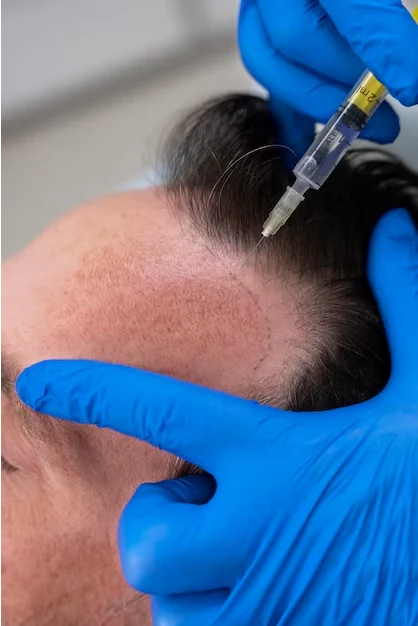
The Hair Transplant Process
-
Initial Consultation
The process begins with a consultation with a hair transplant specialist who evaluates your hair loss pattern, discusses your expectations, and determines the best approach for your transplant.
-
Pre-operative Assessment
Before the surgery, the patient undergoes a thorough health check to ensure they're fit for the procedure. This may include blood tests and an examination of the scalp.
-
Donor Area Preparation
On the day of the surgery, the donor area, usually at the back of the scalp, is trimmed short so the follicles can be easily accessed and removed.
-
Anesthesia
Local anesthesia is applied to numb the donor and recipient areas. Some clinics may also offer sedation to keep the patient comfortable during the procedure.
-
Follicle Extraction
Depending on the technique (FUT or FUE), hair follicles are harvested from the donor area. FUT involves removing a strip of skin with hair follicles, while FUE involves extracting individual follicles directly from the scalp.
-
Graft Preparation
The extracted follicles, now known as grafts, are meticulously prepared under a microscope. They're sorted by size and prepared for implantation.
-
Recipient Site Creation
Tiny incisions are made in the recipient area in the direction and pattern that mimic natural hair growth.
-
Graft Implantation
The prepared grafts are carefully implanted into the incisions in the recipient area. This step requires precision to ensure the hair grows naturally.
-
Immediate Post-Operative Phase
After the transplant, the scalp is bandaged, and instructions are given for home care. This may include pain management, sleeping positions, and activity restrictions.
-
Follow-Up
Patients will have scheduled follow-ups to monitor the healing process and evaluate the success of the transplant.
-
Recovery Period
Initial healing typically takes about two weeks, but it can take up to a year for the full results of the hair growth to be visible.
-
Post-Transplant Care
Proper care following the procedure is critical. This includes gentle washing, avoiding harsh chemicals or styling practices, and taking prescribed medications to encourage healing and hair growth.
Benefits of Choosing Hair Transplant
-
Permanent Solution
Unlike topical treatments or holistic methods, a hair transplant offers a more permanent and reliable solution to hair loss. Once the procedure is complete and the hair begins to grow, it typically continues to do so for a lifetime.
-
Improved Self-Esteem
Hair loss can lead to a significant loss of self-confidence. A hair transplant can restore not just your hair but also your self-esteem, helping you feel more positive and confident in your appearance.
-
Natural-Looking Results
Modern hair transplant techniques produce results that look and feel natural. The transplanted hair grows just like your regular hair, blending seamlessly with the existing hair patterns.
-
Low Maintenance
Transplanted hair works just like normal hair. There are no special shampoos or conditioners needed. After recovery, you can cut, style, and dye it just as you would your natural hair.
-
Cost-Effective in the Long Run
Though the initial cost may seem high, hair transplants can be more cost-effective than lifelong treatments. Without the need for repetitive purchases of special treatments or temporary cover-up products, the investment in a hair transplant pays off over time.
-
Reduces Balding
For most patients, the biggest benefit is the permanent end to balding. The troublesome spots are covered, and because the transplanted hairs are resistant to the DHT hormone that causes hair loss, they won’t thin and fall out in the same way that your original hair might
-
One-Time Procedure
While some patients might choose to have multiple sessions to achieve their desired density, hair transplants are generally a one-time procedure. Most patients will see satisfactory results without the need for repeated treatments.
-
Minimally Invasive with Quick Recovery
Especially with the FUE method, hair transplants are minimally invasive with a quick recovery period. Many patients can return to work and normal activities within a week.
-
Advanced Techniques
Technological advancements in hair transplant procedures have led to high success rates and minimized risks, with skilled surgeons able to create more natural-looking hairlines and dense growth
-
Versatility
Hair transplants are not just for the scalp. They can also be used to restore eyebrows, eyelashes, and beards, providing versatility and aid for various hair loss issues.
Risks and Considerations of Hair Transplant Surgery
-
Surgical Risks
As with any surgical procedure, there's a risk of bleeding, infection, and an adverse reaction to anesthesia. Selecting a reputable clinic and experienced surgeon minimizes these risks.
-
Scarring
While hair transplant techniques have advanced, there's still a risk of scarring. The FUT (Follicular Unit Transplantation) method is known for leaving a linear scar, whereas the FUE (Follicular Unit Extraction) method may leave small, dot-like scars that are less noticeable.
-
Graft Failure
There’s a chance that some of the transplanted hair grafts may not take, which can affect the density and appearance of your hair growth.
-
Infection and Inflammation
Although rare, there is a risk of infection or inflammation of the hair follicles, known as folliculitis. Proper post-operative care can reduce this risk.
-
Temporary Thinning of Pre-existing Hair
Sometimes, the shock to the scalp can cause some of the existing hair to fall out, a phenomenon known as shock loss. Although usually temporary, it can affect the initial appearance.
-
Unrealistic Expectations
Patients must have realistic expectations about the outcome. Hair density and coverage depend on the number of grafts and the quality of the donor hair.
-
Prolonged Recovery
Recovery times can vary, and some individuals may experience prolonged redness, swelling, or discomfort.
-
Numbness or Itchiness
Some patients report temporary numbness or itchiness in the treated areas as the nerves heal.
-
Cost and Time
The procedure can be costly and time-consuming, especially if multiple sessions are required. It's important to consider the financial and time investment when deciding on a hair transplant.
-
Hair Match and Styling Limitations
In some cases, the transplanted hair may not perfectly match the existing hair in texture or color, and certain hairstyles may need to be avoided to conceal scarring.
-
Progressive Hair Loss
Patients with pattern baldness may continue to lose non-transplanted hair over time, which could result in unnatural looking hair patterns if further transplants are not performed.
Recovery and Aftercare Following Hair Transplant Surgery
-
Immediate Post-Operative Care
Right after the procedure, your scalp may be tender, and you may be prescribed pain medication. You’ll likely have bandages over your scalp for at least a day or two, and you may also be prescribed an antibiotic or an anti-inflammatory.
-
Swelling and Bruising
Swelling of the forehead and around the eyes is common but will usually subside within a few days. Sleeping with your head elevated can help minimize swelling.
-
Washing and Hair Care
You will be given specific instructions on how to wash your hair without damaging the new grafts. Typically, gentle washing is possible after a couple of days, but vigorous rubbing should be avoided.
-
Crusting and Itching
As the surgical sites heal, you may notice crusting and itching. It is vital not to scratch or pick at the crusts to prevent damaging the grafts
-
Shedding
Don’t be alarmed if the transplanted hair sheds within the first few weeks—this is a normal part of the process, and the hair will grow back.
-
Activity Restrictions
You'll need to refrain from strenuous activity for at least a week (or as advised by your surgeon) to prevent bleeding or swelling.
-
Follow-up Appointments
You will have follow-up appointments with your surgeon to remove any sutures and check on your healing progress.
-
Hair Growth
It takes time to see growth. New hair growth can often be seen as early as four months post-operation but typically, the full results of a hair transplant are visible after twelve to eighteen months.
-
Sun Exposure
Protect the transplant area from direct sun exposure for the first few weeks to prevent irritation and skin damage.
-
Numbness
Some numbness is normal and will usually diminish within several weeks to months.
-
Scalp Care Products
Your doctor may suggest specific shampoos or sprays to aid the healing process and support hair growth.
-
Lifestyle
Healthy lifestyle choices, like a balanced diet and avoiding smoking or heavy drinking, can enhance healing and hair growth.
Cost and Financing Options for Hair Transplant in India
Cost Influencing Factors
- The expertise and reputation of the surgeon.
- Geographic location of the clinic or hospital.
- The number of grafts needed for the desired fullness.
- The hair transplant technique used (FUE, FUT, robotic hair restoration, etc.).
- The extent of the hair loss and the desired hair density.
Average Cost
Financing Options
- EMI (Equated Monthly Installment): Many hair transplant centers have tie-ups with finance companies to offer EMI options at varying interest rates.
- Medical Loans: Banks and financial institutions offer medical loans for elective procedures like hair transplants.
- Credit Cards: Some patients opt to use their credit cards, especially if they offer an interest-free period or rewards.
Insurance
Quality Over Cost
Transparency:
Reviews and Testimonials
Remember, when it comes to medical procedures like hair transplants, it’s crucial to prioritize quality and safety over finding the cheapest option. Take the time to research and choose a reputable surgeon and clinic that offers a balance of cost-effectiveness and quality care

